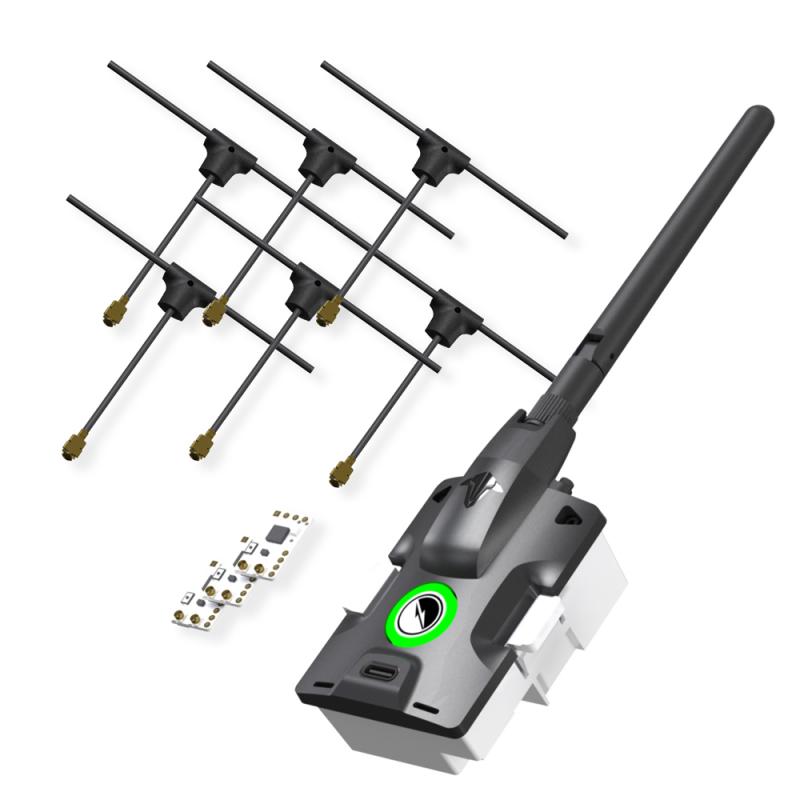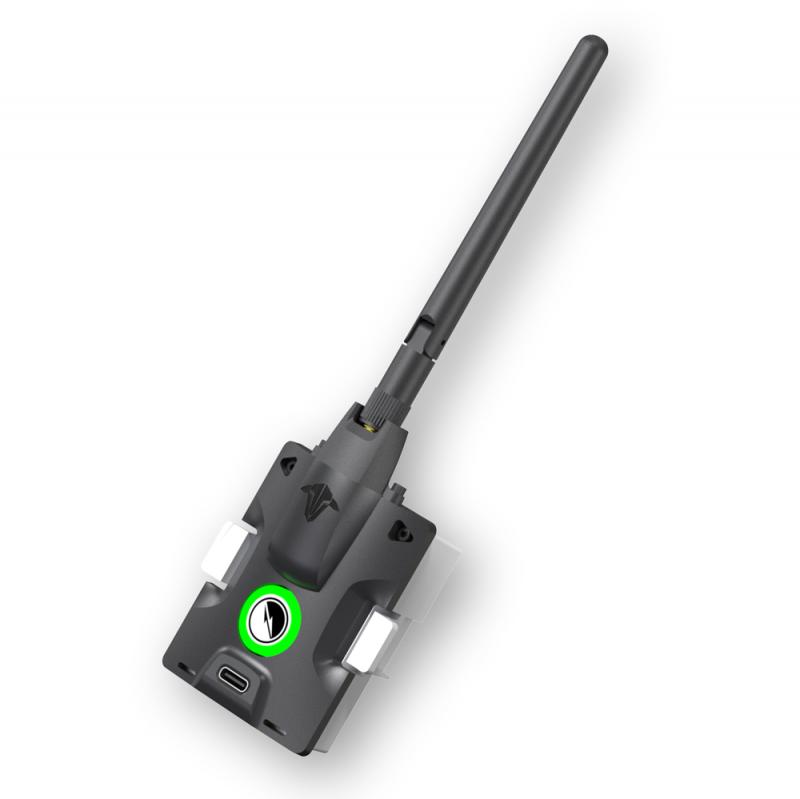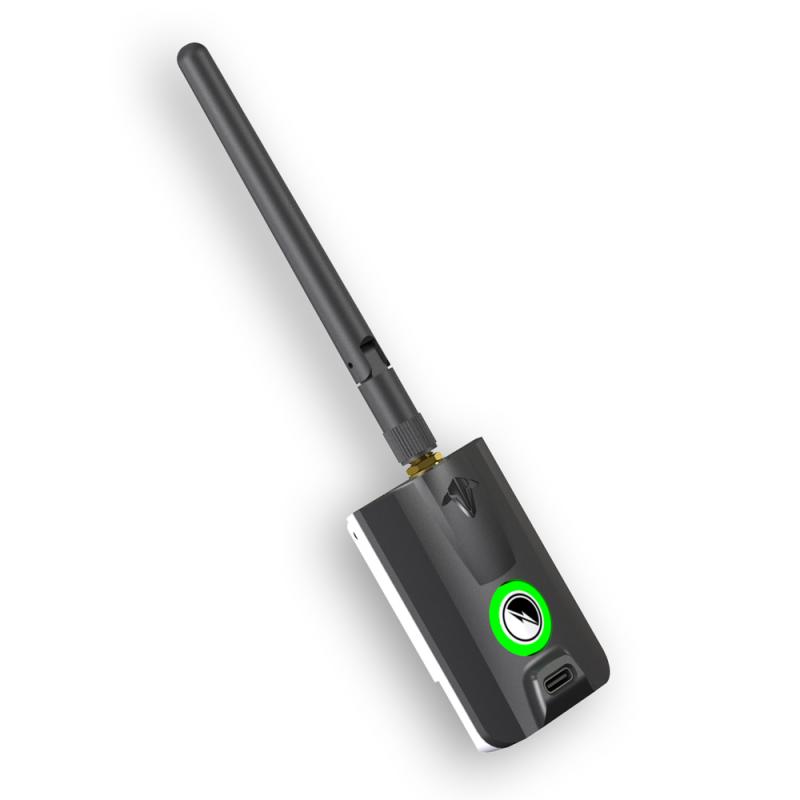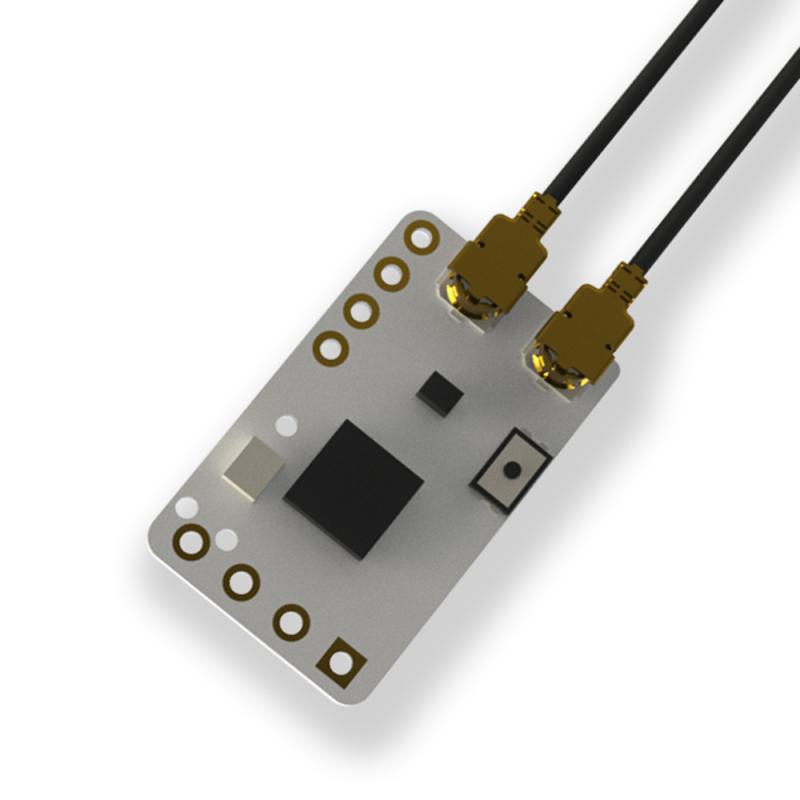TBS Tracer – Fast 2.4GHz Long Range system
Team BlackSheep has just released the 2.4GHz control system. The new Long Range, low latency control system, called TBS Tracer, uses the faster, wider bandwidth 2.4GHz frequency range (versus the TBS Crossfire 900MHz frequency). This allows to minimize the latency down to the 3ms (or 250Hz) and still having the telemetry link back to the radio. This makes the TBS Tracer the fastest radio link with telemetry enabled. Technically it is the same good old Crossfire, just working on the higher frequency. Thanks to the some new magic unicorn dust Long Range RF technology, developed by TBS(?), this fast 2.4GHz link still has got a plenty range – up to 25km and more.
Less latency, smaller antennas, ease of the configuration and great range makes it one of the best radio control systems in the market.
TBS Tracer Micro TX
TBS Tracer Nano TX
TBS Tracer Nano RX
TBS TRACER – 2.4GHZ “CROSSFIRE” RADIO SYSTEM BULLETPOINTS
- 250Hz: Fastest available radio and telemetry link
- Brand new 2.4GHz technology not found in any other radio link
- 3ms end to end latency
- Crossfire engine for ultimate compatibility and functionality
- “JR” and “LITE” form factor transmitters
- Nano-sized receiver with antenna diversity
- 15mi+/25km+ range
- For drones, planes, helicopters, cars and boats
THE FASTEST RADIO LINK
In a race, microseconds count. Goggles down, thumbs up – are you ready for a two-way 250Hz radio link? End to end latency: basically zero (okay, 3ms!). Range: for days. Nothing comes close! We took the best from Crossfire and shrunk it down & sped it up.
NOT JUST FOR RACE AND “FREERANGE” PILOTS
A single operation mode satisfies all requirements. A spine-tingling 250Hz refresh rate. Plenty of penetration and range to outperform even the most serious video link. Full telemetry capability is standard, without any range degradation! Thanks to Crossfire pedigree, drone pilots, traditional R/C pilots and everyone in between can instantly tap into the familiar lineup of compatible software, devices, remotes and mounting boards.
EASE OF USE
OTA firmware updates, auto-bind, multi-bind, LUA device configuration such as flight controller PIDs, etc. and cloud connectivity: No problem! These are all features that TBS first brought into the R/C space with TBS Crossfire! All receivers arrive in binding mode and it remembers your bind across all of your radios, so the bind button is technically not needed ever.
UNDER THE HOOD
TBS Tracer runs on the Crossfire engine. Over 6 years of active development and by far the most popular R/C system for FPV enthusiasts! You instantly tap into the same reliability, features and compatibility that drone pilots see as synonymous to peace of mind. So what’s the difference? Higher update rate, lower latency, smaller antennas due to higher frequency. Crossfire users will feel right at home!
THE TBS GUARANTEE
In our over 10 years of our existence, software updates have always been free, continuous and plenty. Hardware is built for longevity and comes packed with a great range of features that are yet to be unlocked. Support has always been laser-focused on customer satisfaction. For pilots, by pilots.
It is the reason why TBS products have the largest following, and why investment into TBS Tracer will continue to pay dividends in future – just like TBS Crossfire continues to do for all hobbyists. As a thank you from us for your support, visit our website and enter the serial number of your Crossfire as Coupon Code for 30% OFF on all TBS Tracer TX & RX products!
FEATURES:
- Long range, adaptive and robust remote control system for your drone & aircraft
- Low latency, 250Hz update rate (5x faster than typical – world’s fastest) for mind-blowing accuracy
- Two-way communication link with real-time link vitals and telemetry
- OTA firmware updates, auto-bind, multi-bind support
- TBS Cloud connectivity with telemetry output for smartphone apps
- Fully configurable by OpenTX and TBS TANGO remote using CRSF protocol
- “Unlimited” amount of people can fly at the same time
- Selectable RF power from 25mW to 1W (local restrictions apply)
- 8 or 12ch output via CRSF, SBUS, inverted SBUS or PPM
- Serial Modem capable of transmitting MAVLink or other serial protocols (up & downlink)
TX module is available in JR case (Micro) and JR Lite case (Nano):
GetFPV:
https://www.GetFPV.com/catalogsearch/result/?q=Tracer/
Team BlackSheep website:
Micro TX: https://www.team-blacksheep.com/products/prod:tbs_tracer_mtx
Nano TX: https://www.team-blacksheep.com/products/prod:tracer_nano_tx
Starter kits also available (Micro or Nano TX and 3 RX):
https://www.team-blacksheep.com/products/prod:tracer_starterset
https://www.team-blacksheep.com/products/prod:tracer_nanoset
DOWNLOADS
- TBS Tracer Manual
- TBS Agent X (for software updates)
- Latest OpenTX LUA Scripts for Crossfire
- TBS Cloud – Wifi Firmware
- OpenTX Nightly Firmware
TBS TRACER MICRO TX LITE SPECIFICATIONS:
- Latency & Refresh Rate: 3ms, 250Hz
- Output power: 25mW / 100mW
- Frequency Bands: 2.4GHz ISM
- Input Voltage: 3.5 – 13V
- Connector: USB-C
- Power consumption: 1.1W (@10mW) – 2W (@100mW)
- Dimensions: 65 x 48 x 22 mm (JR module size)
- Radio Compatibility: JR module bay (e.g. TBS Tango 1, RadioMaster TX16S, Taranis X9D. OpenTX V2.1+)
TBS TRACER NANO TX SPECIFICATIONS:
- Latency & Refresh Rate: 3ms, 250Hz
- Output power: 25mW / 100mW
- Frequency Bands: 2.4GHz ISM
- Input Voltage: 5V – 9V
- Connector: USB-C
- Power consumption: 1.1W (@10mW) – 2W (@100mW)
- Dimensions:
65 x 48 x 22 mm (JR module size) - Radio Compatibility: Lite module bay (e.g. TBS Tango 2, Taranis X-Lite, X9 Lite), OpenTX V2.1+. The TBS Tracer Nano TX is suggested for use in Futaba and Spektrum remotes that do not have a JR-module bay
TBS TRACER NANO RX SPECIFICATIONS:
- Antnna ports: 2x u.FL / IPEX (diversity)
- Package contents: 1x TBS Tracer Nano RX, 2x Immortal-T, silicone cables
- Protocols: 2x CRSF, SBUS, PPM, 6x PWM, SmartAudio 2.0 / 2.1 (VTx Control)
- Weight: 0.5g (receiver only)
- Size: 11mm x 18mm






I thought Trappy specifically said during live stream that it’s not a LoRa chip?
I don’t believe it. While it is not confirmed, I will assume it uses LoRa technology. Or it can be some Trappy unicorn magic :).
Edit: watched all over Tracer announcements and interviews. Trappy is persistently saying that TBS Tracer is not using the same LoRa technology as Crossfire or IRC Ghost.
Well they indeed may have found another chipset and using some other RF tech.
If this is true, then it is even more interesting.
Edit: updated the article to reflect the magic of the new RF tech 😉
Yeah I’ve been doing some research and apparently the Ghost isn’t using LoRa either in pure race mode. The Semtech LoRa chip they use (https://www.semtech.com/products/wireless-rf/24-ghz-transceivers/sx1281) also supports FSK modulation which is what it switches to in order to be able to do 222Hz (and more in the future).
Interesting, interesting. TBS Crossfire is using the same FSK modulation for 150Hz mode on Crossfire. So we can make assumption, that ALL fast protocols are based on FSK and not LoRa. Now to find out how they managed to achieve the 25Km+ range.